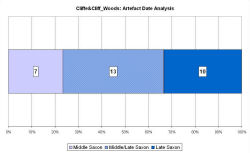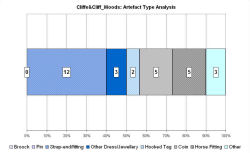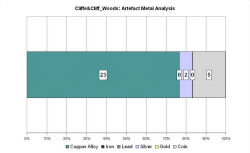Fingerprint charts for i) artefact date analysis, ii) artefact type analysis, iii) artefact metal analysis and iv) coins – date of production




Archives:
http://ads.ahds.ac.uk/catalogue/search/fr.cfm?rcn=NMR_NATINV-416700
http://ads.ahds.ac.uk/catalogue/search/fr.cfm?rcn=NMR_NATINV-416718
The area comprises a marshland area of the Medway on the Thames Estuary. Roman burials, pottery kilns and salt working were investigated in the 1960s. The site of an early 6th-century Saxon inhumation cemetery was found in 1880 when cutting a railway line near the marshes. A large quantity of bones was carted away, and the only remains preserved were a spearhead, bronze belt fittings and the bottom of a bronze dish. The base of a Roman skillet and coins of Nero and Maximian were also found. A possible settlement of the 6th century is indicated by a series of pits with associated finds. Finds included pottery, animal bones and a bronze girdle hanger. There are also traces of early medieval enclosures. Cliffe may be a possibility as the location for a monastic site founded at Hoo c. AD 686-7. The VASLE dataset comprises metal-detected finds recorded in the PAS with some coinage from the EMC.
Fingerprint charts for i) artefact date analysis, ii) artefact type analysis, iii) artefact metal analysis and iv) coins – date of production




© Internet Archaeology/Author(s)
URL: http://intarch.ac.uk/journal/issue25/2/4.4.13.html
Last updated: Tues Apr 21 2009